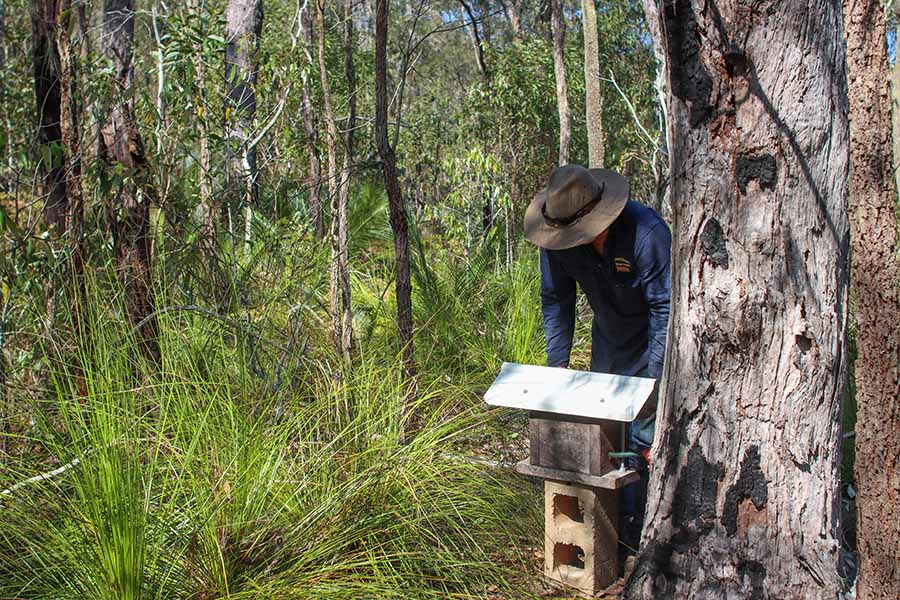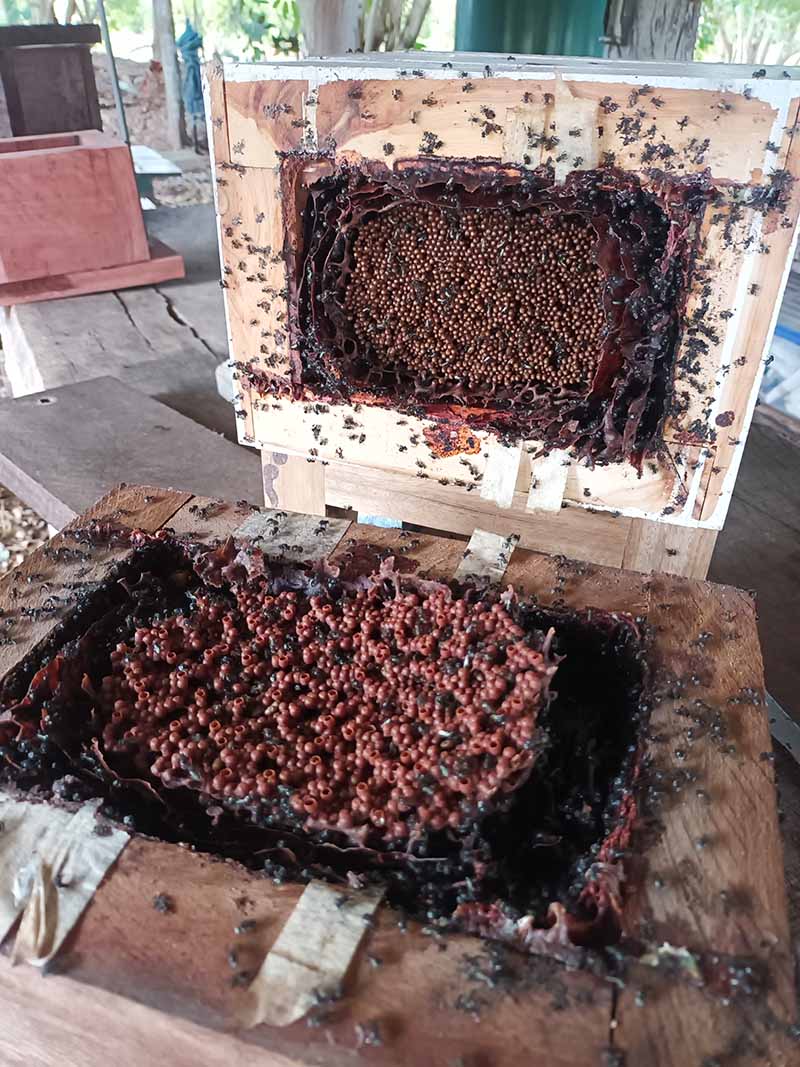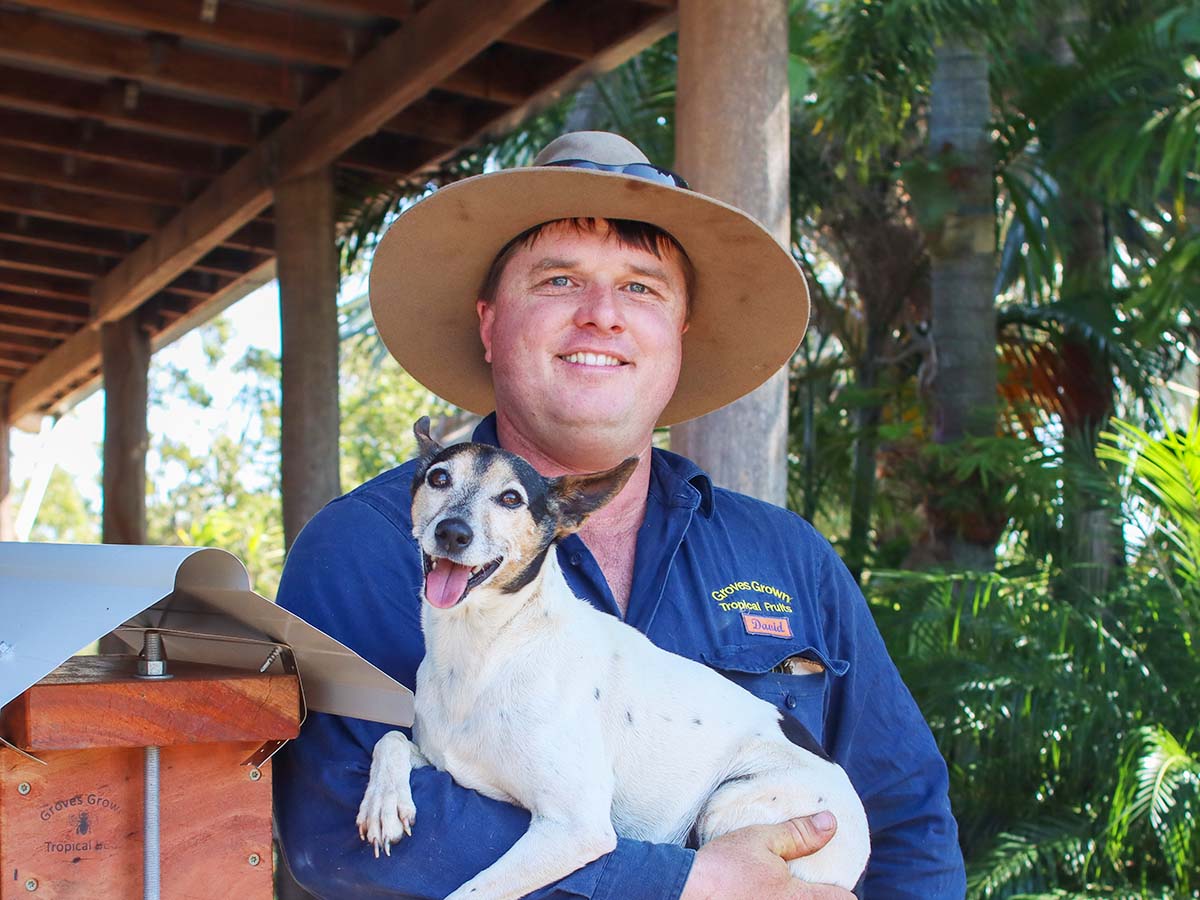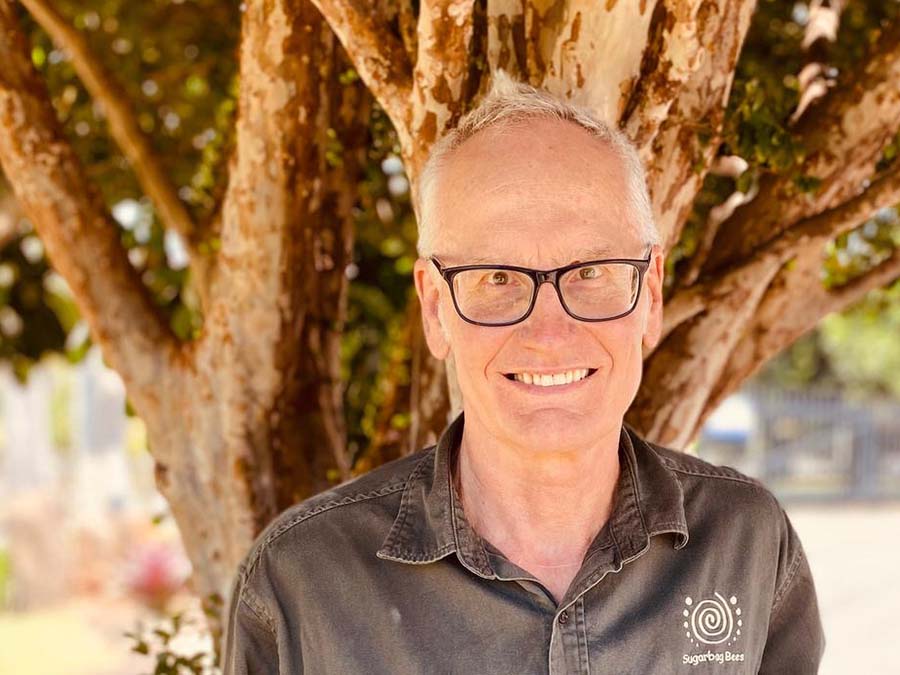 To protect pollinator populations, David decided to research native beekeeping, reducing the risk of varroa mite impacting pollination.
To protect pollinator populations, David decided to research native beekeeping, reducing the risk of varroa mite impacting pollination.
To protect pollinator populations, David decided to research native beekeeping, reducing the risk of varroa mite impacting pollination and building up populations of the species already native and present in the area. The two stingless species he keeps are Austroplebeia Australis and Tetragonula hockingsi.
'I'm not interested in keeping honeybees, I don't like being stung,' he says.
'If you want to make honey, [honey bees] are the way to go, but I want pollination. Native bees seemed like a better way to go for our purposes.'
After reading that a hectare of bushland can support at least one hive, David decided to aim for a long-term goal of setting up around 200 hives for the property.
Native bees have a small flight radius, travelling only up to about 500 metres from the hive, considerably less than the 6 kilometres honey bees can travel. David says that has both its pros and cons; it does mean you have better control of pollination zones, but for larger farms, you can't have only a single site of beehives on-farm.
Supplies to start keeping native bees are easily accessible in Australia. David bought his first two hives full of bees online, which were mailed out to him. David says he got a lot of his knowledge through the 'native bee bible,' called The Australian Native Bee Book by Dr Tim Heard, but there's also plenty of information about bees online.
To build up the populations through the number of hives, David uses three methods. He splits pre-existing hives, rescues hives from places they won't survive, like fallen trees or burn piles, and has an 'eduction' system for wild hives.
David splits pre-existing hives, rescues hives from places they won't survive, like fallen trees or burn piles, and has an 'eduction' system for wild hives.
To split hives, David has built new hives from hardwood harvested from trees that have fallen on the farm during a cyclone, but says they can be bought pre-made, or made using any timber, such as pine or cypress. The standard design for hives is to be made from layers stacked on top of each other. To replicate a hive, when each layer of a box is filled, the layers are taken apart and attached to a new, empty segment. The bees then explore and expand into the new half of the hive.
Unlike a honeybee hive, native bees have multiple queen cells on the go at all times, and 'princess bees' emerge semi-regularly, meaning splitting native hives has a high success rate.
He has also relocated hives from fallen trees and burn piles, even from fruit trees being cut down. Neighbouring landowners have also learnt about David's passion for native bees and will call him if they find a hive in a place that won't survive. To relocate them, as much of the brood and eggs are removed from their original home and into a new hive, moving as many bees into the box and safely relocating the box. Those who move native bees professionally sometimes have a small vacuum, which can safely remove the bees and move them to a new home.
David's also found around 15 colonies living in the wild on the farm. He has no plans to move them, only to keep them safe and potentially propagate more hives from the bushland.
To do this is called 'eduction', or budding, where he adds an empty box to the outside of an existing hive. The bees can still exit from the tree hollow through the new box and have the option to start a new colony in it.
This method can work, but it's considerably slower than splitting hives manually. Out of the 15 attempts he has made at budding over three years, he's only had six hives take hold, compared to the success of splitting pre-existing hives every 12 to 18 months.
Where he keeps the hives once they have split is also important. Native bees aren't as good at regulating their hive temperature as honeybees.
'They don't carry water back to the hive to cool it, and they're not as good at keeping it warm in winter,' David says. For those reasons, it's essential to find a spot that gets enough sunlight in winter but not too much during summer.
Beyond actively setting up and building hives, David and everyone on the farm at Groves Grown Tropical Fruit do their part in creating a pollinator-friendly environment. David and his mum, Sandi, plant a lot of flowering trees and shrubs for windbreaks and green breaks, as well as annual flowers on the ends of rows of trees so pollinators have flowers to forage on during the off-season of tropical fruit flowering.







